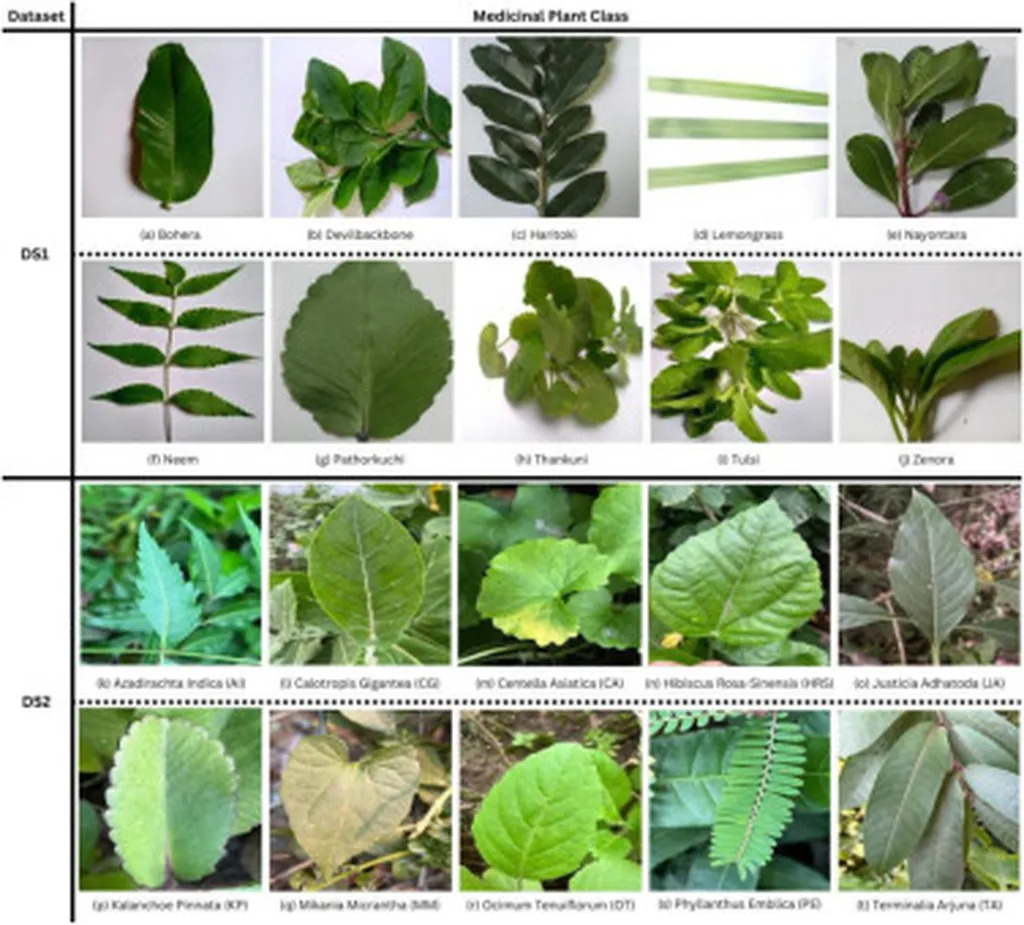In the heart of Bangladesh, researchers are harnessing the power of computer vision to revolutionize the way we identify medicinal plants. Md. Mafiul Hasan Matin, a computer scientist from Netrokona University, has recently published a groundbreaking dataset that could significantly impact the fields of ethnobotany, agriculture, and digital health. His work, published in the journal ‘Data in Brief’ (translated as ‘Brief Data’), offers a treasure trove of visual data that could accelerate the development of automated medicinal plant identification systems.
Matin’s dataset comprises 1380 original RGB images of six medicinal plant leaves: Arjun Leaf, Curry Leaf, Marsh Pennywort Leaf, Mint Leaf, Neem Leaf, and Kalanchoe pinnata, also known as Rubble Leaf. These images were captured under natural lighting conditions using an iPhone 13 Pro, ensuring high quality and consistency. To enhance the dataset’s diversity and improve model generalization, Matin applied seven augmentation techniques, including brightness adjustment, geometric transformations, and horizontal flipping. This process resulted in 9660 augmented images, bringing the total number of samples to 11,040.
The dataset is meticulously organized and openly available via the Mendeley Data repository, making it accessible to researchers worldwide. “This dataset is a significant step forward in the field of computer vision and machine learning,” Matin explained. “It provides a robust foundation for developing algorithms that can accurately identify medicinal plants, even under varying lighting conditions and orientations.”
The implications of this research are vast, particularly in the energy sector. Medicinal plants are a crucial resource for the production of biofuels and other renewable energy sources. Accurate and efficient identification of these plants can streamline the supply chain, reduce costs, and improve the overall sustainability of bioenergy production.
Moreover, the dataset can facilitate the development of mobile applications and handheld devices that can instantly identify medicinal plants in the field. This technology can empower farmers, herbalists, and healthcare professionals, enabling them to make informed decisions and improve their practices.
Matin’s work also contributes to broader efforts in digital health. Accurate identification of medicinal plants is essential for ensuring the safety and efficacy of herbal remedies. By providing a reliable dataset for training machine learning models, Matin’s research can help develop tools that can verify the authenticity of medicinal plants and detect counterfeit or adulterated products.
As the world grapples with the challenges of climate change and energy security, the need for innovative solutions has never been greater. Matin’s dataset offers a valuable resource for researchers and developers working on cutting-edge technologies that can address these pressing issues. “This is just the beginning,” Matin said. “I hope that this dataset will inspire further research and collaboration in the field of computer vision and machine learning, leading to the development of more advanced and accurate identification systems.”
In the coming years, we can expect to see significant advancements in the field of automated medicinal plant identification, driven by the availability of high-quality datasets like Matin’s. These developments will not only benefit the energy sector but also contribute to the preservation of biodiversity and the promotion of sustainable practices. As we continue to explore the potential of computer vision and machine learning, the possibilities are truly endless.

